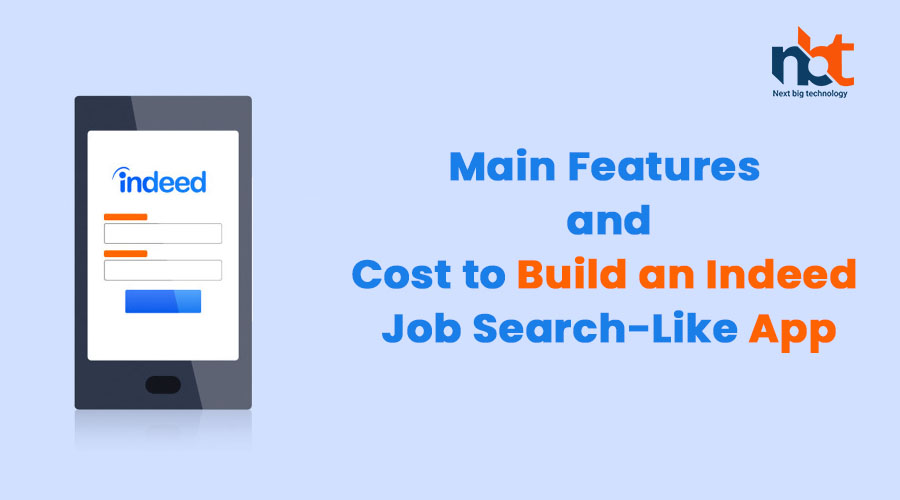Introduction:
Indeed has become one of the leading platforms for job seekers and employers to connect and find suitable employment opportunities. If you’re inspired by the success of Indeed and considering building a similar app, it’s important to understand the main features required and the associated costs to create a robust and user-friendly job search platform. In this comprehensive guide, we will explore the main features and cost factors to consider when building an Indeed-like app. Let’s dive in!
I. Main Features of an Indeed Job Search-Like App:
- User Registration and Profiles:
- Allow users to create accounts, set up profiles, and manage personal information, including their education, work experience, skills, and desired job preferences.
- Job Search and Filters:
- Implement a powerful job search engine that enables users to search for jobs based on keywords, location, industry, experience level, and other relevant filters.
- Advanced Job Recommendations:
- Utilize algorithms and user behavior analysis to provide personalized job recommendations based on users’ search history, profile, and job preferences.
- Company Profiles and Reviews:
- Enable users to access detailed company profiles, including information about the company, reviews from current and former employees, and ratings.
- Job Alerts and Notifications:
- Provide users with the option to set up job alerts based on their search criteria and receive notifications when new relevant job opportunities are posted.
- Application Tracking:
- Allow users to track their job applications, including the status, interview schedule, and communication history with potential employers.
- Resume Upload and Creation:
- Provide users with the ability to upload their resumes and create professional-looking resumes within the app to easily apply for jobs.
- Saved Jobs and Folders:
- Allow users to save job listings to their personal folders for future reference and easy access.
- Job Application History:
- Enable users to view their job application history, including the jobs they have applied for and the corresponding application status.
- Job Search Alerts for Employers:
- Offer a feature for employers to set up alerts based on their hiring needs, notifying them when candidates with specific qualifications or experience become available.
- Communication with Employers:
- Facilitate communication between job seekers and employers through in-app messaging or contact information sharing.
- Salary Information:
- Provide salary information for job listings, allowing users to gauge salary expectations and negotiate offers effectively.
- Analytics and Insights:
- Offer users analytics and insights on job application statistics, interview success rates, and other relevant data to help them track their job search progress.
- Mobile App and Web Platform:
- Develop both a mobile app and a web platform to ensure accessibility and provide a seamless user experience across devices.
II. Cost Factors to Consider:
- Platform Selection:
- Determine whether you want to build the app for iOS, Android, or both platforms. The choice will impact development costs and timeframes.
- App Design and User Interface:
- Investing in an intuitive and user-friendly app design is crucial to providing a seamless job search experience. Costs may vary based on design complexity and customization requirements.
- Development Team:
- Hiring experienced developers, designers, and quality assurance specialists is essential for building a robust and feature-rich job search app. The team size will impact costs.
- App Development Approach:
- Decide between native or cross-platform development. Native apps offer better performance but require separate development for iOS and Android. Cross-platform solutions can reduce development time and costs.
- Backend Infrastructure:
- Building a scalable backend infrastructure to handle user management, job listing storage, search algorithms, and notifications is critical. Costs will vary based on infrastructure complexity and hosting requirements.
- Integration with Job Listing Platforms:
- Consider the need to integrate with job listing platforms or APIs to aggregate job listings from various sources. This may require additional development and integration costs.
- Third-Party Integrations:
- Consider integrating third-party services, such as resume parsing tools, applicant tracking systems, or background checking services, which may incur additional costs.
- Testing and Quality Assurance:
- Allocate resources and budget for thorough testing to ensure the app’s functionality, performance, and security.
Conclusion:
Building an Indeed Job Search-like app requires careful consideration of the main features and cost factors involved in creating a robust and user-friendly job search platform. Costs will vary depending on factors such as platform selection, app design, development approach, team size, and desired features and functionality. Prioritize the main features based on your target audience and business goals to control costs while ensuring the app’s reliability and user satisfaction. By considering the main features and cost factors discussed in this guide, you can lay a solid foundation for developing a successful job search app that empowers users to find suitable employment opportunities and connect with potential employers.










